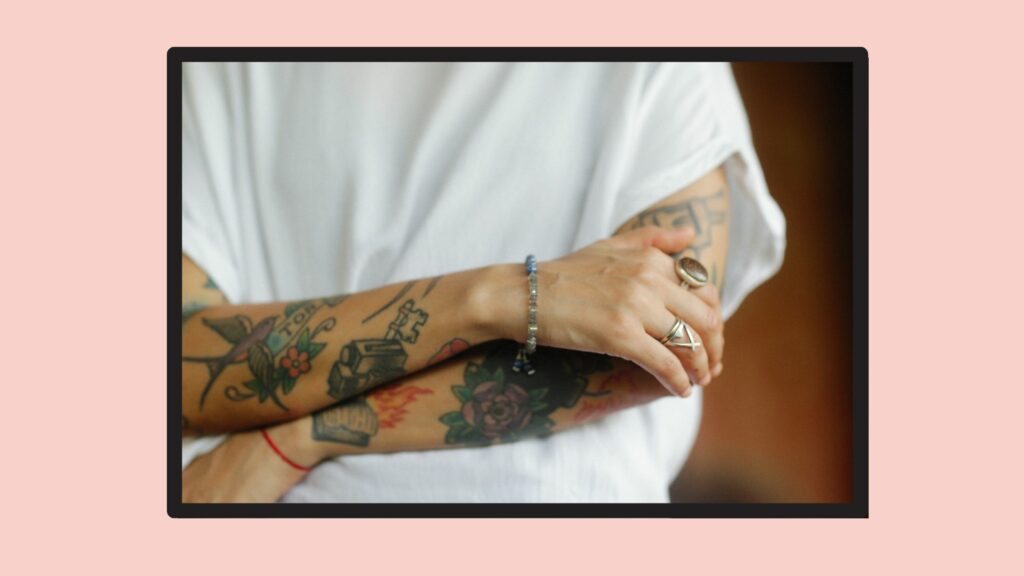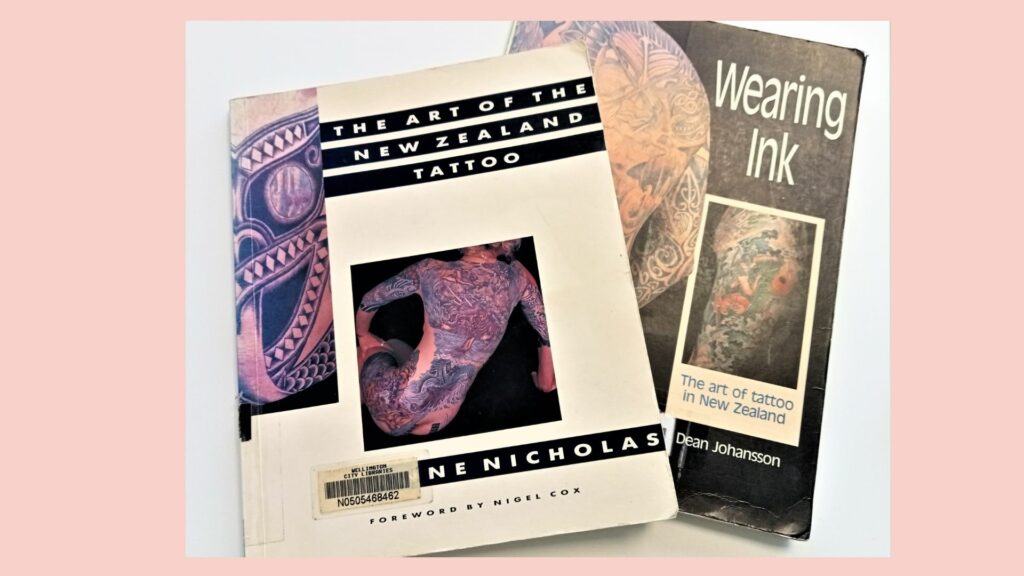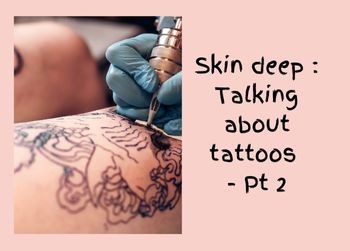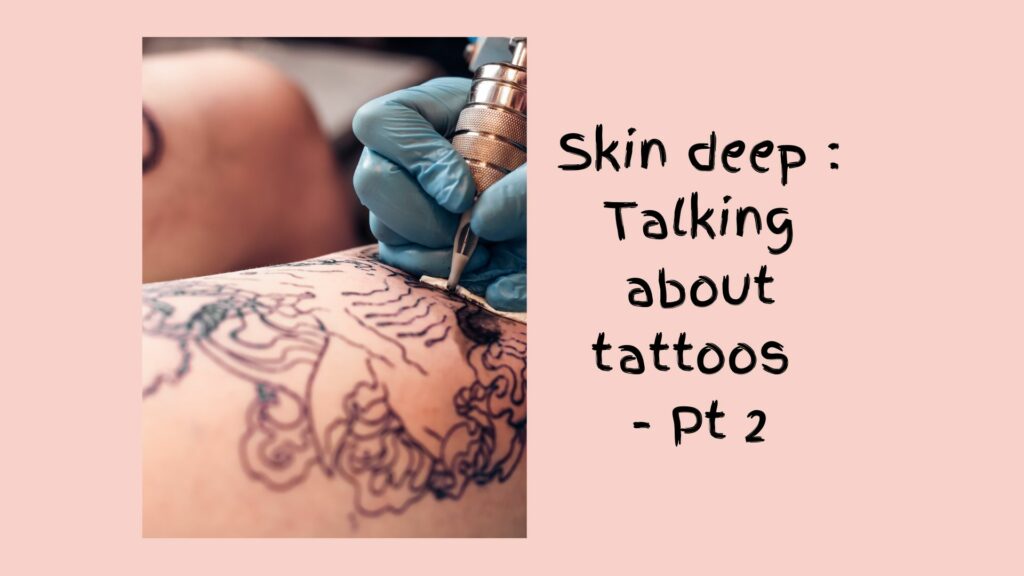Part 1 of this blog can be read here
Regulation of the industry / health and hygiene
Tattoo parlours have traditionally had a slightly seedy reputation. These days professional commercial premises lean towards a welcoming, brightly lit vibe and – importantly – high levels of cleanliness.
If you are thinking about getting a tattoo, advice from those within the industry is to think very carefully about who you get to do it and where.
A reputable studio often has a range of tattooists to choose from, portfolios on offer showcasing the work of each artist, and many businesses emphasise comfort and adherence to industry safety and hygiene guidelines as well as artist experience and areas of particular expertise or tattooing styles.
However at a national level the tattooing industry in New Zealand remains unregulated. Anyone can purchase a tattooing gun and inks via the internet and start tattooing. As tattooing involves piercing the skin, it is important that certain health and safety guidelines are followed. Infection and blood borne diseases, if equipment is not hygienically prepared, are very real, and unpleasant, risks.
In 1998 the Ministry of Health published Guidelines for the Safe Piercing of Skin.
It is expected that they [the guidelines] will be used widely by operators who offer
body piercing and tattooing services in order to provide a framework
of minimum standards with respect to infection control in the industry.
These guidelines have not been updated although in 2010 the Ministry issued the Customary Tattooing Guidelines for Operators.
Throughout New Zealand some councils have introduced their own bylaws to regulate tattooing and associated businesses. Auckland has the most comprehensive and readily accessible set of guidelines.
In 2019, Wellington City Council planned to introduce a brand new beauty industry bylaw and sought responses about regulation of the beauty sector, following a Regional Public Health survey about infection-control procedures in nail salons in the Wellington region. Feedback was received from a wide range of operators in the beauty industry including tattooists.
Due to the emergence of Covid in early 2020 changes were put on the back burner for now meaning that in Wellington commercial tattoo businesses continue to be self regulating. However reputable artists and studios work to a code of ethics set out by the Tattoo Artists Association of New Zealand (TAANZ).
As with health services clients to a reputable tattoo studio are expected to sign a consent form. The consent, waiver and release form at Buttercat studio lists nine points regarding health disclosures and acknowledgement of understanding of the tattooing process the client must sign prior to work being undertaken. A further three points are initialled post work accepting satisfaction with the process and the care taken.
Kat from Sinatras Tattoos emphasized that complete honesty about any underlying health issues is important in both the tattooing and tattoo removal process and includes full disclosure about any medications that may increase bleeding risks.
Remember in Part 1 there were unsuccessful moves in 1969 to introduce legislation preventing tattooing on anyone under the age of 18 years? New Zealand continues to have no legal age restrictions on getting a tattoo. It is generally accepted that if you are over the age of 16 years and capable of giving consent, then you can be tattooed.
Members of TAANZ, who follow the industry code of practice, will not tattoo anyone under the age of 18 without the written consent of a parent or guardian. It was with parental consent that Amy (our library colleague featured in Part 1) was able to get her first tattoo at the age of 15.
In 2018 an Auckland tattooist became the first to be prosecuted under the local Health and Hygiene Bylaw 2013 for tattooing an underage youth without parental consent.
Consumer rights
Readers may recall an advertisement that ran on television a while back in which a man shrugs off his shirt to reveal a giant tattoo of his partner’s image, complete with the mis-spelled phrase No regerts.
Unless the man in question specifically intended that spelling the tattoo artist could be held responsible under the Consumer Guarantees Act. As with any service, a tattoo from a reputable studio requires them to ensure all care is taken to deliver a product the customer is happy with. If, for legitimate reasons, the customer is unhappy with the quality of the work or feels a mistake has been made, the studio is obliged to either fix the mistake or refund you the cost as per the Act.
Read more about your rights around getting a tattoo in Risks and regrets : what to consider before getting a tattoo. Consumer (2022) issue 614 April/May. pp 56-60
Tattoos and copyright
In 2020 an Australian IP expert asked the question : Who owns the rights to your tattoo? While primarily Australian in content the article noted :
In New Zealand, more restrictive rules around commissioned art and copyright mean a paying client can be the first copyright owner of a custom tattoo, regardless of whether they actively contributed to the design process.
A similar piece from two years earlier, by the NZ Law Society also asked But who owns that tattoo and found that :
To prevent any copyright issues in New Zealand, a reversal of the copyright law needs to be acknowledged and agreed to by both parties to be enforced and, while the artist could retain the rights to their design after its been purchased, they can’t retain the rights to the canvas the design is on – skin. Which opens a whole new bag of worms.
Whether you are providing your artist with your own design or whether the artist is designing one for you it pays to be aware of copyright considerations and raise the subject with your tattooist.
In recent years there has also been a growing awareness of cultural appropriation amongst tattooists particularly around the etching of indigenous designs on non-indigenous people. A reputable artist may refuse to do such work if asked and is within their right to do so.
Tattoos in the workplace

In Wellington bars and cafes it’s almost de rigueur to have at least some ink, if not a lot, on display.
And it’s not just here. In a recent attempt to attract staff a Nelson cafe offered up a $500 tattoo voucher to the successful applicants who stayed for six months.
Owner, Kymberly said, in response to our enquiries that “…, over the last couple of years many of our staff have opted to get matching whisky glass tattoos (Glencairns) and tattoos to celebrate various distilleries and whisky festivals, this was written about recently in an article in the New York Times about one of our most loved distilleries Ardbeg where it was noted that hardcore fans have tattoos as an ode to Ardbeg”
However not all employers or workplaces are open to visible tattoos and depending on the tattoo and its placement an employer is within their rights to request that it be covered. Employsure offers advice in this piece on physical appearance in the workplace
In 2019 both the New Zealand Police and Air New Zealand moved to permit visible tattoos within prescribed limits.
As part of a recruitment campaign the Police went as far as highlighting frontline staff with tattoos and the varied stories behind the skin art.
Both organisations have similar wording for new recruits.
From the NZ Police recruitment site :
Apart from Ta Moko or equivalent, you shouldn’t have tattoos in prominent places such as the hands or face. If you do these will need to be assessed.
Tattoos which are offensive, rude, or incite hatred are totally against our values are an absolute “no”. No exceptions. [sic]
Air New Zealand allows all staff “… to have Tā Moko and non-offensive tattoos visible when wearing our uniform or normal business attire … We ask employees to treat tattoos like they treat speech – you can’t swear, make hateful comments or lewd jokes in the workplace, neither can your tattoos.
The armed forces have long had a tradition of tattoos and for those serving in any branches of the Defence Forces Tattoos, including large and highly visible cultural tattoos are acceptable provided they are appropriate for a military environment and are complementary to the NZDF’s values and image.
Learn more in this op-ed piece by employment lawyer Susan Hornsby-Geluk: Can your boss ban your tattoo?
That signs off our two part blog looking at the tattooing industry in Wellington. If you have any comments or feedback please feel free to get in touch.
Library resources
Along with the resources we listed at the end of Part one of this blog here’s some of the other items we have consulted or have available through Wellington City Library collections
The state of the industry: From tattooing fisherman and scaffolders to anyone and everyone.
Looks at the development of the tattooing industry in New Plymouth and includes interviews with several artists and an overview of training. (Stuff.co.nz Feb 07, 2020)
The inked trail: How women are shaping tattoo culture in New Zealand
Profiles two female tattoo artists – Lura Nehren-Smith and Taryn Beri, a moko kauae specialist. (Stuff.co.nz 08 September 2019)
History of tattooing
This Wikipedia entry has a concise overview of tattooing history as well as an extensive reference list.
Flash tattoo portraits / Karena, Kia Maia
“Fantasy tattoo templates.” (Catalogue)
 Inked
Inked
“Inked magazine covers pop culture and music for people that enjoy Tattoo art or have Tattoo designs on their bodies. Each issue has interviews with popular celebrities and the tattoo artists who decorate their bodies. There are tons of photos to inspire your next work of body art.” (Catalogue)
On Kanopy (library registration required to access)
Tattoo uprising
From antiquity to the present, TATTOO UPRISING reveals the artistic and historical roots of today’s tattoo explosion. This sweeping overview explores how tattoos were used in early Christian practices, how they were discovered halfway around the world during the voyages of Captain James Cook, and how they exploded in popularity in America beginning with artists like Ed Hardy.
Tattoo Uprising features some of the most extraordinary people of the tattoo world including Ed Hardy, Stoney St. Clair, Cynthia Witkin, Anne de Hey! and others, as well as unforgettable appearances by filmmakers Les Blank and Werner Herzog, who allows a rare glimpse at his Ed Hardy tattoo.
Tattoo Nation
For years people saw tattoos as a sign of rebellion. A middle finger salute to the rest of the world. Outlaw bikers got tattoos. Sailors on leave in Singapore got tattoos. Lifers in the joint got tattoos. But now in the United States one out of every three adults under forty has a tattoo! So what happened? How did tattoo go from something that was put on you to an expression that comes from within you? TATTOO NATION tells the story of a few people who helped transform the world of tattoo, and the way we think about tattoos, forever. This is the true story of the ink revolution
On Libby(library registration required to access)
The World’s most incredible tattoos

Tā moko : Māori markings / Howarth, Crispin
“The practice of tā moko, and the wearing of moko, was considered an art form of a bygone day for the most part of the twentieth century, as casualty of Aotearoa New Zealand’s colonial past. However, this unique Pacific art is enjoying a revival. Its embers fanned back to life by modern practitioners in the 1980s, it has once again become a powerful form of Māori cultural expression, identity and unity. In a first for Australia, ‘Māori markings: tā moko’ looks at not only the history of this living, breathing art of our region but also shares stories of today’s proud moko wearers and practitioners”–Foreword.” (Catalogue)
Mokorua : Nga korero mo toku moko kauae – My story of moko kauae / Tikao, Ariana
One woman’s journey to her moko kauae as an expression of her Kai Tahu identity.
Pakeha ta moko : a history of the Europeans traditionally tattooed by Māori / Bentley, Trevor
“Explore the hidden history of European men and women traditionally tattooed by Maori. In Pakeha Ta Moko, Trevor Bentley examines the extent and significance of Maori and Pakeha tattoo exchange both on ship and shore between the 1790s and 1840s. He uncovers the tattooing methods as well as the purpose and significance of the designs. Bentley examines why and how some captive Pakeha males were forced to receive facial tattoos while others voluntarily crossed cultures and submitted themselves to the ta moko ritual. Through in-depth research and interviews, Bentley explores this important part of early New Zealand history.” (Catalogue)
Patterns of the past : tattoo revival in the Cook Islands / Mangos, Therese
“Patterns of the Past traces the history and practice of tattooing (tātatau) through the ancient oral traditions of the Cook Island people, as well as from reports of early Western visitors and rich archival material. The book looks at the current practices of contemporary Cook Island tattooists, what the tattoos mean and what techniques and instruments are traditionally used. More than 250 colour and black and white images included.” (Catalogue)
Tatau : Samoan tattoo, New Zealand art, global culture / Adams, Mark
“Samoan tattoing, or tatau is an ancient Polynesian art tradition and rite of passage that reaches its most powerful expression in the full body male tattoo, the pe’a. Building on the internationally touring exhibition Tatau, this extraordinary series of images by leading photographer Mark Adams documents the story of tatau in the Pacific and its remarkable globalisation.” (Catalogue)
If you need more information please contact the Prosearch team at the library. We can help you find information across a range of perspectives and resources. All enquiries are treated in confidence.



